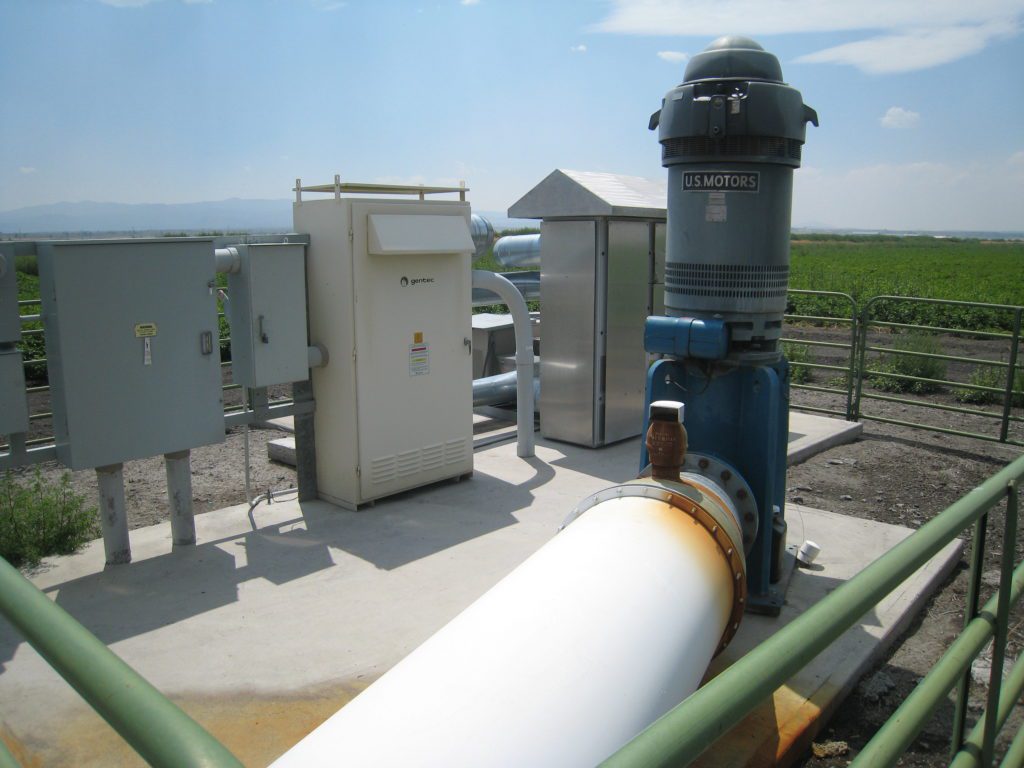Sep 1, 2021Klamath River watershed managers balance California farmers, fish
A state drought curtailment regulation, adopted in early August for the Klamath River watershed, calls for minimum in-stream flows but also incorporates potential voluntary actions to achieve water savings to help fish and keep farmers farming.
Montague rancher Ryan Walker, president of the Siskiyou County Farm Bureau, said the State Water Resources Control Board took a balanced approach in making its decision.
“One of the things that we asked for in the regs that we got was flexibility…to have some adaptive management and we got that,” Walker said. “To the board’s credit, they understood that they were doing this in a very short time frame and put in placeholders, even for the underlying flow requirements to be negotiated and certainly for the voluntary agreements to be negotiated on an ad hoc basis.”
The action affects holders of 3,500 water rights in the Scott and Shasta rivers of the Klamath watershed. The regulation affects those who divert surface and groundwater based on the water right priority system, and affects the most junior water rights first.
It includes measures to help maintain minimum flows to protect fish, ensure supplies for human health and livestock needs and encourage voluntary efforts that may be used in lieu of curtailments.
Explaining how the regulation would impact water diverters, Walker said, “the devil’s in the details.” He said those who divert surface water don’t have much of an assurance of water and will have to make some tough decisions.
“You have to decide: Do I feed cows through the winter and then hope I have water? Do I sell cows now? Do I plant grain and hope for rain to bring it up instead of alfalfa? Do I fallow ground now and try to preserve what pastures I can?” Walker said.
State water board staff explained that, under the regulation, groundwater diverters with the highest level of priority can work together under potential voluntary cooperative agreements to reduce water use in the coming year by 30% in the Scott River and 15% in the Shasta River.
“Guys with groundwater can take advantage of the 30% rule in the Scott and 15% in Shasta to have more options and get some certainty by finding this water savings,” Walker said. “That was something the Farm Bureau fought for—to get certainty. We would have liked an ability for all water users to get certainty, but what we got was what we got.”
In urging the board to include voluntary actions to achieve local water savings in the regulation, speakers at the meeting last week highlighted decades-long water conservation efforts.
“A lot of good work has gone in locally,” said Chris Scheuring, California Farm Bureau senior counsel. “The folks in the watershed are really the ones that know what can be done, and certainly kudos to board staff, doing a whole lot of work with flexibility and trying to find solutions to get us where we need to go in the context of voluntary cooperative agreements.”
However, Scheuring added, “We continue to have a problem with the (California Department of Fish and Wildlife) flow recommendations as the default driver of these regulations, whether they are reasonable, whether they can be achievable and whether they can be effective.”
Sari Sommarstrom of Etna in Siskiyou County suggested that the plan for achieving instream flows is not achievable as written in the proposed regulation.
“The expectation that these (minimum flows) are going to be what’s needed is not going to end in success, unfortunately,” Sommarstrom said. “It would be great to have those minimum flows to help the fish. Unfortunately, I don’t see these expectations being met with your proposal.”
The state can help locals by providing technical and financial help for installing water meters on wells and also with a watermaster for the local area, Sommarstrom suggested. She said, “It is much better if you have a watermaster delegated here to understand all of these issues.”
Meanwhile, Walker said, “These regs probably don’t mean much for this season: Some pasture guys are going to have to start feeding a little bit early and alfalfa guys aren’t going to take a fourth cutting.” He added: “We want to find ways to get through this year and next year and not have for-sale signs on ranches and to try to make this all work.”
Once the regulation for the Scott and Shasta watershed is approved by the Office of Administrative Law and filed with the secretary of state, curtailment orders can be issued. Unless the state’s drought declaration is lifted, the curtailment regulations will remain in place into the next water year, which begins Oct. 1.
The regulation follows other drought emergency curtailment regulations adopted by the board for water rights holders in the Sacramento-San Joaquin River Delta and Russian River watersheds. For the delta, the state water board last Friday issued curtailment orders to approximately 4,500 water right holders to protect drinking water supplies, prevent salinity intrusion and minimize impacts to fisheries and the environment.
“We knew this was coming in terms of hydrology and that there was no way that all the water right holders were going to be able to get the water that their water rights indicated, but that doesn’t make it hurt any less,” Scheuring said.
The water board asks water users to subscribe to their respective region’s drought list or to frequently visit the board’s Watershed Drought Information page at www.waterboards.ca.gov/drought.
– Christine Souza, California Farm Bureau Federation















